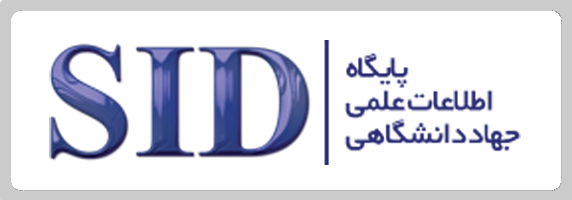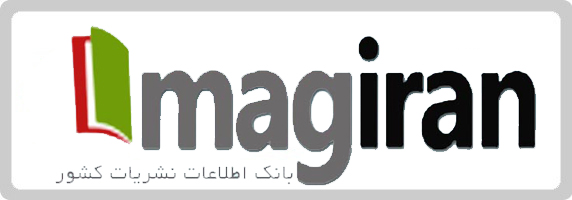The Necessity and Objectives of a Skills-Based Curriculum for High School Students in Theoretical Stream
Keywords:
Curriculum, Skills Training, Students, High School Theoretical StreamAbstract
This study was conducted with the aim of designing and validating a skills-based curriculum model for high school students in the theoretical stream. The objective of the research was to identify the necessities, theoretical foundations, and key components of skills-based curricula. Additionally, the study emphasized the importance of creating the necessary conditions to empower students for entry into society and the labor market. The research followed a qualitative approach and employed the conventional content analysis method. Data were collected through semi-structured interviews with faculty members specializing in education and through the analysis of relevant documents. The target population consisted of faculty members from departments of educational sciences at universities and higher education centers. Purposeful sampling was used, and the sample size was determined based on the principle of data saturation. The data collection tool was a semi-structured interview, with each session lasting between 50 and 60 minutes. Data analysis involved initial coding and the extraction of key concepts through conventional content analysis. The findings of this study indicate that the necessity of designing a skills-based curriculum includes 41 concepts, 9 subcategories, and 5 main categories. The main categories are: the status and necessity of skills-based education, operational feasibility, theoretical and practical foundations, students’ competencies and qualifications, and the features of an optimal educational program. The objectives of this curriculum include familiarization with occupational skills and the labor market, fostering creativity, enhancing motivation, and empowering students to enter society and the workforce. The results demonstrate that skills-based curricula for the theoretical stream in high school should emphasize the use of innovative and practical teaching methods. Designing a practical skills-based curriculum grounded in both theoretical and practical foundations can enhance students’ competencies and better prepare them for successful integration into the labor market and society.
Downloads
References
Bezi, A., Fakoori, H., Bayani, A. A., & Saemi, H. (2024). Design and Validation of an Environmental Education Curriculum Model for Higher Education Based on the "Aker" Approach [Research Article]. Iranian Journal of Educational Sociology, 7(1), 79-90. https://doi.org/10.61838/kman.ijes.7.1.8
Bicer, A., Aleksani, H., Butler, C., Jackson, T., Smith, T. D., & Bostick, M. (2024). Mathematical creativity in upper elementary school mathematics curricula. Thinking Skills and Creativity, 51, 101462. https://doi.org/10.1016/j.tsc.2024.101462
Ganieva, Y. N., Azitova, G. S., Chernova, Y. A., Yakovleva, I. G., Shaidullina, A. R., & Sadovaya, V. V. (2014). Model of high school students professional education. Life science journal, 11(8), 504. https://www.researchgate.net/publication/290031569_Model_of_high_school_students_professional_education
Hadadi, E., Kiani, G., & Jafarzadeh, H. (2017). Implementation of a Modern Approach to Student Skill Training and Apprenticeship. Karafan Journal, 14(41), 105-119. https://en.civilica.com/doc/993765/
Hejazi, A., & Saei Mehraban, R. (2017). Establishment and Development of Skill Training Schools.
Hoseinkhani, K., Ghasemi, M., & Hejazi, M. (2022). The effectiveness of educational package based on cognitive components of critical thinking, problem-solving,and metacognition on students' self-efficacy and academic vitality. icss, 23(4), 48-60. https://doi.org/10.30514/icss.23.4.48
Jamshidi, H., Faghihi, A., & Yousefzadeh, M. (2021). Extracting the Characteristics of the Fundamental Elements of the Skill Training Curriculum for Secondary High School Students. Journal of Research in Curriculum Planning, 18(68), 73-85. https://www.sid.ir/paper/383902/en
Jiang, Z. (2022). The Teaching of Sports Physical Education Skills under Exercise Physiology Based on Support Vector Machine. Discrete Dynamics in Nature and Society, 2022, 4416617. https://doi.org/10.1155/2022/4416617
Karimi, A., Gholtash, A., & Machinchi, A. A. (2023). Develop and validate a model for teaching metacognitive skills based on quantum thinking to student-teachers. Sociology of Education, 9(1), 359-370. https://doi.org/10.22034/ijes.2022.544223.1207
Kasneci, E., Sessler, K., Küchemann, S., Bannert, M., Dementieva, D., Fischer, F., Gasser, U., Groh, G., Günnemann, S., Hüllermeier, E., Krusche, S., Kutyniok, G., Michaeli, T., Nerdel, C., Pfeffer, J., Poquet, O., Sailer, M., Schmidt, A., Seidel, T., . . . Kasneci, G. (2023). ChatGPT for good? On opportunities and challenges of large language models for education. Learning and Individual Differences, 103, 102274. https://doi.org/10.1016/j.lindif.2023.102274
Malaki, H., & Alipour Moghaddam, K. (2022). dentifying and Validating the Principles and Objectives of the Moral Education Curriculum Model [Original Research]. Bimonthly of Education Strategies in Medical Sciences, 15(3), 280-289. http://edcbmj.ir/article-1-2428-en.html
Mozafarzadeh, A., & Abbasi, M. (2022). Investigating the Role of Managers and Teachers in Fostering Student Creativity and Methods of Creativity Development in Schools. Journal of Modern Research Approaches in Management and Accounting, 6(86). https://majournal.ir/index.php/ma/article/view/1779
Navidi, A. (2014). The Why and How of Integrating General Education and Technical-Vocational Training. Journal of Educational Innovations, 13(52), 78. https://noavaryedu.oerp.ir/article_79049.html
Sadovaya, V. (2014). Model of high school students professional education.
Weng, X., Chiu, T. K. F., & Tsang, C. C. (2022). Promoting student creativity and entrepreneurship through real-world problem-based maker education. Thinking Skills and Creativity, 45, 101046. https://doi.org/10.1016/j.tsc.2022.101046
Wu, J. Y., Hsu, Y. S., Zhang, W. X., & Ho, Y. T. (2022). The collaborative discourse characteristics of high school students during a web-based module for a socioscientific issue. Instructional Science, 50(4), 499-527. https://doi.org/10.1007/s11251-021-09574-1
Xu, E., Wang, W., & Wang, Q. (2023). The effectiveness of collaborative problem solving in promoting students’ critical thinking: A meta-analysis based on empirical literature. Humanities and Social Sciences Communications, 10(1), 16. https://doi.org/10.1057/s41599-023-01508-1
Downloads
Published
Submitted
Revised
Accepted
Issue
Section
License
Copyright (c) 2024 ندا جمال آبادی (نویسنده); علی اصغر بیانی (نویسنده مسئول); حسین فکوری حاجی یار , حسن صایمی , محمد مهدی نادری (نویسنده)

This work is licensed under a Creative Commons Attribution-NonCommercial 4.0 International License.






